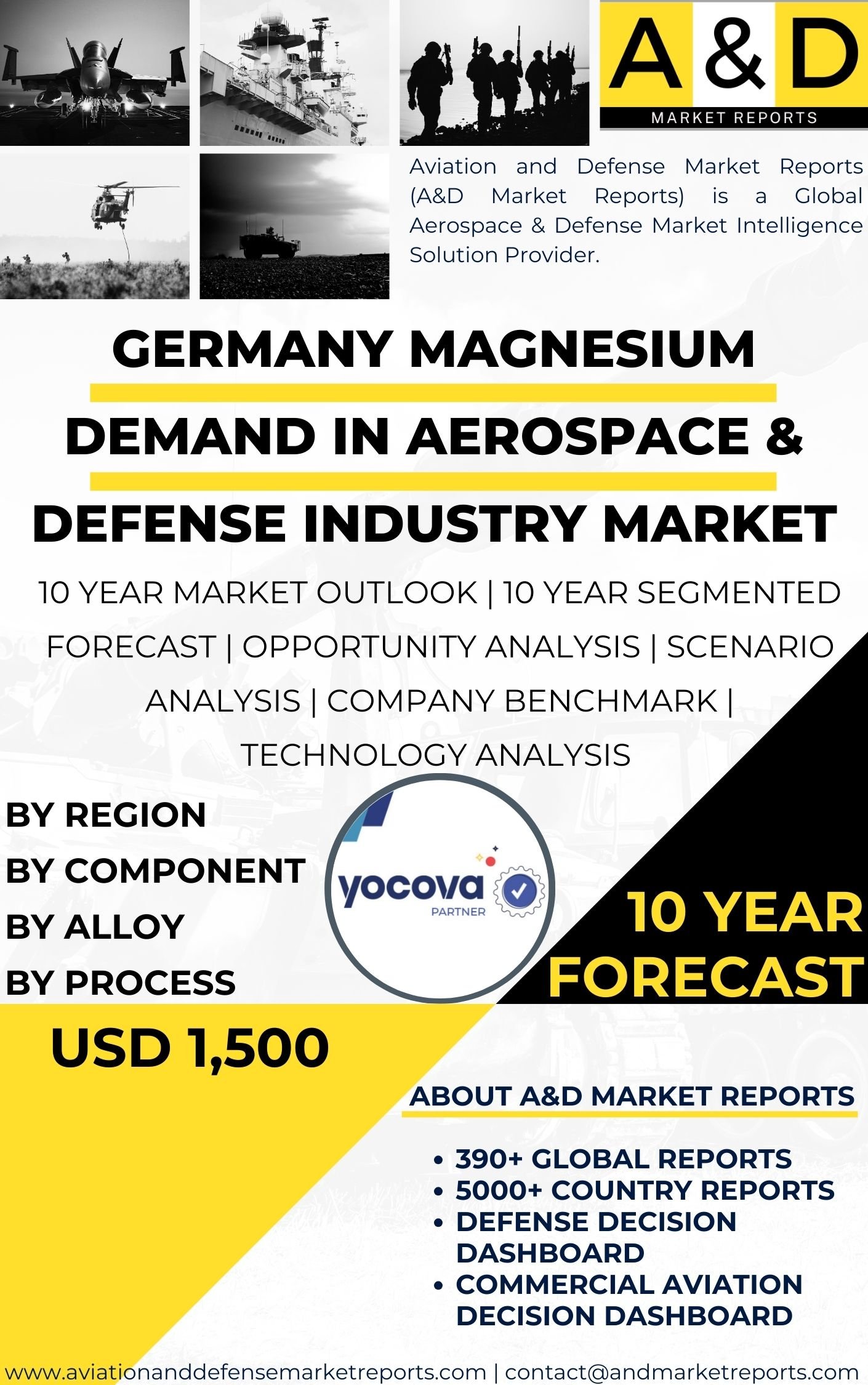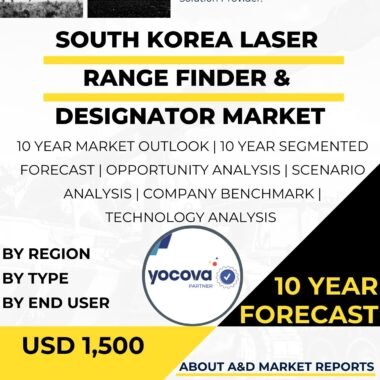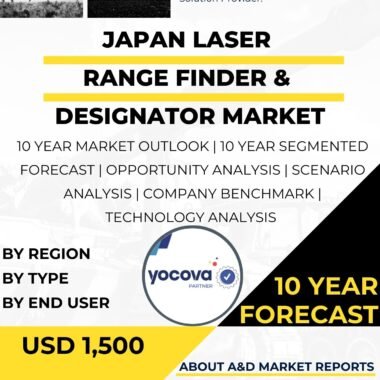Description
Demand for Magnesium in the Aerospace and Defense Industry in Germany is driven by the critical need for lightweight, high-performance materials that can enhance fuel efficiency, reduce emissions, and improve overall aircraft performance. Magnesium, recognized as the lightest structural metal commercially available, offers a superior strength-to-weight ratio compared to traditional materials such as aluminum and steel, making it increasingly attractive for various aerospace applications. Its density is substantially lower than aluminum, translating into significant weight savings when used in aircraft components. This weight reduction directly contributes to lower fuel consumption and operating costs, a paramount objective for aerospace manufacturers and airlines alike.
The aerospace sector, including both commercial aircraft and defense systems, has been actively adopting magnesium alloys for structural parts, engine components, landing gear, cabin interiors, and satellite structures. Technological advancements have improved the properties of magnesium alloys, addressing challenges historically associated with magnesium, such as corrosion susceptibility and flammability. Innovations in alloy composition and surface treatments are enhancing corrosion resistance and mechanical strength, allowing magnesium alloys to endure demanding operational environments typical in aerospace. These improvements have expanded the practical applications of magnesium alloys, moving beyond simple structural components to parts that require high strength and durability under stress.
Magnesium alloys also exhibit excellent vibration damping and thermal conductivity, features advantageous for aerospace structures and electronic housings within aircraft. The aerospace industry’s pursuit of sustainability and the push for reduced carbon footprints further accelerates the shift towards magnesium and other lightweight metals. Stringent environmental regulations compel manufacturers to innovate toward lighter airframes and components to meet emission reduction targets. Additionally, the defense sector values magnesium alloys for the potential to reduce the weight of military aircraft and vehicles, which enhances mobility and performance while easing logistics.
Despite the clear advantages, several challenges could temper the pace of magnesium demand. Production costs remain relatively high given the complex, energy-intensive extraction and refining processes required to produce aerospace-grade magnesium alloys. Raw material supply constraints and geopolitical factors affecting global magnesium mining and processing also create uncertainties in the supply chain. Moreover, magnesium?s flammability under certain conditions demands specialized manufacturing techniques and stringent safety protocols, necessitating additional investment in research and development to ensure safe and reliable applications in aerospace environments.
Geographically, demand is robust in regions with established aerospace manufacturing bases, including North America and Europe, where major aircraft manufacturers and defense contractors lead in adopting advanced lightweight materials. Meanwhile, rapidly growing aerospace markets in the Asia-Pacific region, particularly China, also contribute significantly to rising demand for magnesium alloys, spurred by expanding domestic aircraft production and increasing defense expenditures. The expanding commercial aerospace sector and rising defense budgets fuel demand growth across these regions, creating a competitive market landscape with multiple key players innovating to capitalize on the growing market.
Market trends indicate expanding use of wrought magnesium alloys, favored for their superior mechanical properties, over cast variants in aerospace applications. Application-specific demand focuses heavily on airframe components, engine parts, and satellite structures, driven by their critical weight-saving potential and performance benefits. Emerging manufacturing technologies, such as additive manufacturing (3D printing), present new opportunities for producing complex, lightweight magnesium alloy parts customized for aerospace applications, further enhancing demand.
Overall, the magnesium demand in aerospace and defense is shaped by the convergence of performance imperatives, regulatory pressures, and technological advancements. Continued development of high-strength, corrosion-resistant magnesium alloys paired with innovative manufacturing methods positions magnesium as a key material in advancing next-generation aerospace design. Growth in global air travel, defense modernization, and sustainable aviation initiatives is expected to maintain strong momentum behind magnesium adoption, underscoring its vital role in the sector?s future development. While challenges exist, ongoing investments in material science and supply chain resilience indicate a promising long-term outlook for magnesium use in aerospace and defense applications. This sustained demand underscores magnesium?s crucial contribution to lightweighting, efficiency, and environmental goals within one of the most demanding industrial sectors worldwide.
This comprehensive demand outlook accounts for the industry’s pressing need for performance enhancements and fuel efficiency through advanced materials, reinforcing magnesium?s strategic importance to aerospace and defense markets.




